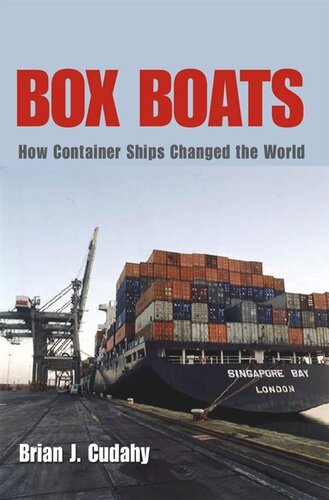

Most ebook files are in PDF format, so you can easily read them using various software such as Foxit Reader or directly on the Google Chrome browser.
Some ebook files are released by publishers in other formats such as .awz, .mobi, .epub, .fb2, etc. You may need to install specific software to read these formats on mobile/PC, such as Calibre.
Please read the tutorial at this link: https://ebookbell.com/faq
We offer FREE conversion to the popular formats you request; however, this may take some time. Therefore, right after payment, please email us, and we will try to provide the service as quickly as possible.
For some exceptional file formats or broken links (if any), please refrain from opening any disputes. Instead, email us first, and we will try to assist within a maximum of 6 hours.
EbookBell Team

4.1
100 reviewsFifty years ago—on April 26, 1956—the freighter Ideal X steamed from Berth 26 in Port Newark, New Jersey. Flying the flag of the Pan-Atlantic Steamship Company, she set out for Houston with an unusual cargo: 58 trailer trucks lashed to her top deck. But they weren’t trucks—they were steel containers removed from their running gear, waiting to be lifted onto empty truck beds when Ideal X reached Texas. She docked safely, and a revolution was launched—not only in shipping, but in the way the world trades. Today, the more than 200 million containers shipped every year are the lifeblood of the new global economy. They sit stacked on thousands of “box boats” that grow more massive every year. In this fascinating book, transportation expert Brian Cudahy provides a vivid, fast-paced account of the container-ship revolution—from the maiden voyage of the Ideal X to the entrepreneurial vision and technological breakthroughs that make it possible to ship more goods more cheaply than every before. Cudahy tells this complex story easily, starting with Malcom McLean, Pan-Atlantic’s owner who first thought about loading his trucks on board. His line grew into the container giant Sea-Land Services, and Cudahy charts its dramatic evolution into Maersk Sealand, the largest container line in the world. Along the way, he provides a concise, colorful history of world shipping—from freighter types to the fortunes of steamship lines—and explores the spectacular growth of global trade fueled by the mammoth ships and new seaborne lifelines connecting Asia, Europe, and the Americas. Masterful maritime history, Box Boats shows how fleets of these ungainly ships make the modern world possible—with both positive and negative effects. It’s also a tale of an historic home port, New York, where old piers lie silent while 40-foot steel boxes of toys and televisions come ashore by the thousands, across the bay in New Jersey.